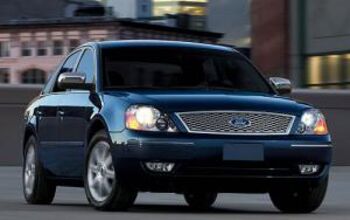Hammer Time: What's In Your Oil?
Two hundred thousand miles.
It’s a beautiful moment for many a car owner.
As for me? Well, I admit that I cheated when I saw that number flash by in my wife’s car back in March. Like many an enthusiast, I had bought it used and was planning on keeping her daily driver for the long haul.
The question for me was, “How long would the long haul be?” Since I buy, fix and sell a lot of vehicles, and have deeply imbibed the fluids of wisdom at the Bob Is The Oil Guy web site, I decided to live my life on the wild side.
I performed an oil analysis.
What I got back was a smorgasbord of technical information, and one pithy summation that went like this.
“STEVE – 200,000 miles? Please! This engine’s still a spring chicken. Metals look great here, so assuming she’s still running well and you’re not having any problems, then there is nothing about this sample that seems troublesome at all. Averages are based on about 7,600 miles on the oil. You could run your oil a bit longer, for sure. The TBN is kind of getting low (it’s down to 1.4 and 1.0 or less is low), but the TBN tends to drop more slowly the more use an oil sees, so it might hang on at this level for a while. The viscosity was fine assuming you used a 5W/20. Try 9k miles.”
I loved the spring chicken part. Boy that made my day. However that whole TBN remark threw me for a loop.
And what in the heck was a TBN in the first place? The BAD number???
Well, that’s when my quest for knowledge became a great big time suck. I went here, and later here. It was that second “here” which truly opened my eyes to what that TBN comment actually meant, and why I probably don’t want to delve any deeper into the inner workings of motor oil.
My engine was great. Case closed. Barring any unusual events, I was good to go for many more miles. I could extend my oil interval to 9,000 miles from 6,000 miles with a synthetic blend. Or maybe I could do a full 15k with a high performance full-synthetic engineered for longevity.
Mobil 1 EP? Amsoil? Deep Purple? Sorry.
The sad fact is that my wife drives a common-as-kudzu Prius with a light foot, and enough driving distance for the engine to always warm up. The local shop charges $20 for a synthetic blend and a quality filter. My net savings would be maybe $5 if I did it myself once a year with synthetic (her car holds a little less than 4 quarts.)
I spent $25 to figure all this out. So much ado about nothing. It was time to take the thermometer out of the motor oil, and worry about one less thing in my life.
My technical results are highlighted here. In the world where enthusiasts have to deal with the economics of keeping a car for a long time, an oil analysis can help you answer the uncertainties of a valvetrain’s health. But chances are, if your oil is regularly changed and you use products that are API-certified, there are better ways to spend your money.
If your car quits, chances are it won’t be your oil’s fault.
More by Steven Lang
Latest Car Reviews
Read moreLatest Product Reviews
Read moreRecent Comments
- BOF Not difficult: full-size body-on-frame sedan, V8, RWD, floaty land yachts. Unabashed comfort and presence. Big FWD Eldo too. While I’m at it, fix Buick much the same way just a little less ostentatious and include a large wagon w/3rd row.
- Jeff I noticed the last few new vehicles I have bought a 2022 Maverick and 2013 CRV had very little new vehicle smell. My 2008 Isuzu I-370 the smell lasted for years but it never really bothered me. My first car a 73 Chevelle and been a smoker's car after a couple of months I managed to get rid of the smell by cleaning the inside thoroughly, putting an air freshener in it, and rolling the windows down on a hot day parking it in the sun. The cigarette smell disappeared completely never to come back. Also you can use an ozone machine and it will get rid of most odors.
- Lou_BC Synthetic oil for my diesel is expensive. It calls for Dexos2. I usually keep an eye out for sales and stock up. I can get 2 - 3 oil and filter changes done by my son for what the Chevy dealer charges for one oil change.
- Joe65688619 My last new car was a 2020 Acura RDX. Left it parked in the Florida sun for a few hours with the windows up the first day I had it, and was literally coughing and hacking on the offgassing. No doubt there is a problem here, but are there regs for the makeup of the interiors? The article notes that that "shockingly"...it's only shocking to me if they are not supposed to be there to begin with.
- MaintenanceCosts "GLX" with the 2.slow? I'm confused. I thought that during the Mk3 and Mk4 era "GLX" meant the car had a VR6.


































Comments
Join the conversation
I've only seen two engines internally ruined: 1. My friend's Dodge Intrepid 2.7, which spun a bearing at 70k miles. No surprise there. 2. My other friend's 95 (?) Buick 3.8, which spun a bearing when the plastic timing gear teeth sheared off, traveled to the oil pan, and he restarted the engine after repairing it without cleaning out the pan. This car had about 80k miles. Better oil wouldn't have saved them, but better engineering might have.
Great write-up. I'm using the Amsoil 5w-30 alongside the nano-based Everglide EGS and I'm pretty impressed with this combination. I'm happy using Amsoil alone before, but my mpg has increased when I started using Everglide. It made my driving smoother and quieter too. Oil is indeed a huge factor in the longevity of your car.